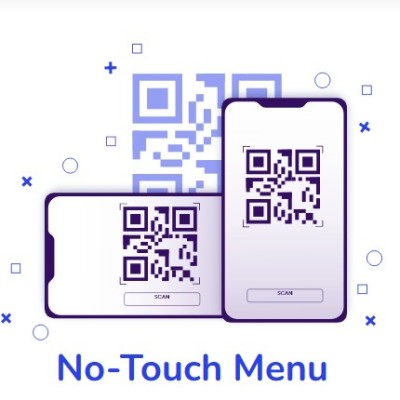Teaching preschoolers number sequencing might sound like a big task, but it doesn’t have to be! With the right mix of fun, play, and gentle structure, kids can learn to recognize number patterns naturally. In fact, one of the best ways to introduce this essential math skill is through games and engaging preschool learning activities. So, if you’re a parent, teacher, or caregiver looking to support early math for preschoolers, this blog is your go-to guide. Let’s explore some easy and enjoyable ways to teach number sequencing to young learners.
1. Why Number Sequencing Matters in Early Math
Number sequencing is the ability to recognize the order of numbers and understand their relationships. For preschoolers, this skill lays the foundation for all future math learning, including addition, subtraction, and even telling time. When children grasp number sequencing, they develop a sense of number patterns and a stronger understanding of how numbers work together.
For young children, learning these concepts through repetition and play builds confidence. Repeating numbers aloud, arranging objects in a sequence, and filling in number gaps are great preschool learning activities that support this goal. Kids love routines and games that follow predictable patterns, and number sequencing fits perfectly into that rhythm.
Incorporating number sequencing into everyday play is an easy way to make math for preschoolers feel natural. Think of lining up toys in number order, climbing stairs while counting, or setting the table with a certain number of items. Each of these activities builds numerical understanding without feeling like formal “lessons.”
2. Use Number Cards for Quick and Simple Games
Number cards are one of the most versatile tools in teaching preschoolers. They’re affordable, easy to use, and perfect for a wide range of games. You can create your own set using index cards or buy colorful, themed versions to make them more exciting for little ones.
One fun game is “Missing Number.” Lay out a sequence of cards (like 1-2-3-5-6) and ask your child, “What number is missing?” This simple task helps them recognize order and reinforces memory. Another popular activity is “Number Match,” where kids match cards to the correct quantity of objects, like placing a card with the number “4” next to four toy animals.
As children grow more confident, increase the difficulty by scrambling cards and asking them to put them in order. This encourages critical thinking and helps them visualize number patterns. These preschool activities support math skills while keeping young minds engaged.
3. Hopscotch and Floor Games for Active Learners
For kids who love to move, turning number sequencing into a physical game can make a big difference. Hopscotch is a classic example. Use chalk to write numbers on the ground and encourage your child to hop in order. You can even add a twist—have them call out the numbers backward or skip every second number!
Another great option is using number mats or sticky notes on the floor. Ask kids to jump from number to number in the correct order. You can turn it into a “Number Treasure Hunt” where they follow clues to find the next number in sequence. This kind of physical engagement works especially well for children who learn best through movement.
These games aren’t just fun—they’re effective. They combine gross motor development with cognitive learning, showing how physical preschool learning activities can enhance brain growth and math understanding.
4. Story-Based Sequencing for Creative Minds
Not every child learns through numbers alone. Some connect better with stories and visuals. For these learners, number sequencing games that involve characters or narratives can be incredibly powerful. Try reading counting books like “Ten Little Ladybugs” or “Chicka Chicka 1-2-3”, and then act out the story using toys or pictures.
You can also create your own number stories. For example, imagine a bus picking up passengers. “First, 1 bunny gets on. Then, 2 cats. Next comes 3 ducks...” As you tell the story, lay down number cards and animal toys in the correct order. Ask your child questions like, “What number comes after 2?” or “How many animals are on the bus now?”
This storytelling method taps into your child’s natural love of imagination while sneaking in essential lessons about numbers. It’s a great way to make math for preschoolers both meaningful and memorable.
5. Digital Games and Apps to Support Learning
In today’s world, screens are part of everyday life. While it's important to keep screen time balanced, educational apps and games can reinforce number sequencing in a fun and interactive way. There are many age-appropriate options that align with preschool learning activities and are designed with early math in mind.
Look for apps that involve dragging and dropping numbers in order, identifying missing numbers, or solving puzzles that require number patterns. Some apps reward kids with stars or virtual stickers, which motivates them to keep trying and learning. Make sure the app includes audio support, especially for non-readers, so they can hear the numbers aloud.
Use digital tools as a supplement to hands-on learning. Let your child play a short game after completing a physical activity like hopscotch or card sorting. This combination of digital and real-world practice helps children retain number skills in different environments.
6. DIY Crafts That Teach Number Order
Arts and crafts are an excellent way to introduce number sequencing without it feeling like math. Try making a number caterpillar with circles of paper labeled 1 to 10. Your child can decorate and arrange them in order. Or create a number train, adding new cars as numbers go up.
You can also use clothespins and a string to create a “number line” across the room. Write numbers on the pins and have your child clip them in order. If they get it wrong, gently help them reorder the numbers and talk through the sequence. These crafts double as fun preschool activities and visual learning tools.
By making math tactile and visual, you’re helping your child build number sense in a hands-on way. And the bonus? They get to be creative while learning—a win for both parent and child!
Conclusion: Learning Made Fun with i-Maths Canada
At i-Maths Canada, we believe in making learning exciting, meaningful, and age-appropriate. We specialize in early childhood math education through engaging, hands-on experiences that build a strong foundation in critical thinking, problem-solving, and number sense. Our programs are carefully crafted to blend preschool learning activities, math for preschoolers, and preschool activities into one dynamic curriculum.
Whether your child is just beginning their math journey or ready to explore deeper concepts, i-Maths Canada offers programs designed to nurture curiosity and spark a lifelong love of learning. Our educators use fun games, creative challenges, and structured activities that help preschoolers understand number sequencing and more in an enjoyable, supportive environment.







